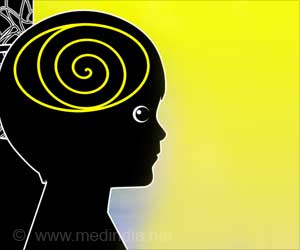Decreased levels of allopregnanolone (ALLO) in the placenta can result in autistic-like behavior in male children. The reduction in the levels of the placental hormones triggered abnormalities in the cerebellum and changes in myelin sheaths.
- Decreased levels of placental allopregnanolone (ALLO) alter brain development in male children
- About one in ten infants is born prematurely and deprived of normal levels of ALLO
- ALLO deficiency causes structural changes in the cerebellum and myelin sheaths, leading to autism-like behaviors
Autism is a neurodevelopmental disorder typically characterized by impaired social and communication skills combined with repetitive movements. There is no single cause for autism. There is currently no cure for autism. However, early intervention treatment can improve a child’s development.
“Our study provides new and intriguing insights into how the loss of placental hormones can lead to long-term structural changes in the brain that increase the risk for autism or other neuropsychiatric disorders. What’s encouraging is that these disorders may be preventable if diagnosed and treated early,” says lead author Dr.Claire-Marie Vacher.
Gamma-aminobutyric acid (GABA) is an amino acid that serves as the primary inhibitory neurotransmitter in the brain and a major inhibitory neurotransmitter in the spinal cord.
Read More..
ALLO Insufficiency Caused Brain Abnormalities in Male Mice
For this study, the researchers used a mouse model in which they selectively decreased the production of ALLO during pregnancy. This exposed some developing pups to sufficient placental ALLO while hindering others.Both male and female fetuses were subjected to ALLO deficiency, but only the male mice that lacked placental ALLO have been linked to autism. They had structural changes in the cerebellum, a brain region that coordinates movement. Myelin sheaths, the fatty tissue clusters that protect nerve cells, also got some degree of alterations. The more the sheath was thickened, the more the male mice exhibited autism-like behaviors.
“Our experimental model demonstrates that losing placental ALLO alters cerebellar development, including white matter development. Cerebellar white matter development occurs primarily after birth, so connecting a change in placental function during pregnancy with lingering impacts on later brain development is a particularly striking result,” adds Penn, Associate Professor of Pediatrics at Columbia University Vagelos College of Physicians and Surgeons.
ALLO Injection Puts an End to Brain Problems
To test the therapeutic potential of ALLO, the team gave a single injection of either ALLO or muscimol, a drug that enhances the function of GABA receptors to the mice model during their late pregnancy period. The administration of these agents reduced the cerebellar abnormalities to a substantial level, and the male pups showed relatively fewer autism-like behaviors.Impact of ALLO Insufficiency in Human Preterm Brain Development
The team then analyzed the post-mortem cerebellar tissues of preterm and full-term human infants (both male and female) who died soon after birth. These tissues showed sex-linked alterations in the proteins that occur during the process by which the amount of myelin increases around nerves.This indirectly suggests similarities between mouse placental ALLO insufficiency and human preterm brain development.
“Identifying when key hormone levels are abnormal and figuring out how and when to adjust these levels provides an opportunity to intervene. Performing additional studies with our mouse model, and measuring hormone levels in moms and babies, may lead to an earlier treatment to reduce or prevent long-term cognitive and behavioral impairments in high-risk fetuses and newborns,” highlights Penn.
Facts on Autism
- In 2020, 1 in 54 children in the United States is diagnosed with autism spectrum disorder (ASD), according to CDC.
- Boys are four times more likely to be diagnosed with autism than girls.
- 31% of autistic kids have an intellectual disability.
References
- Claire-Marie Vacher, Helene Lacaille, Jiaqi J. O’Reilly, Jacquelyn Salzbank, Dana Bakalar, Sonia Sebaoui, Philippe Liere, Cheryl Clarkson-Paredes, Toru Sasaki, Aaron Sathyanesan, Panagiotis Kratimenos, Jacob Ellegood, Jason P. Lerch, Yuka Imamura, AnastasPopratiloff, Kazue Hashimoto-Torii, Vittorio Gallo, Michael Schumacher, Anna A. Penn. Placental endocrine function shapes cerebellar development and social behavior. Nature Neuroscience, Aug. 16, 2021; DOI: 10.1038/s41593-021-00896-4
- Jewett BE, Sharma S. Physiology, GABA. [Updated 2020 Aug 29]. In: StatPearls [Internet]. Treasure Island (FL): StatPearls Publishing; 2021 Jan-. Available from: - (https://www.ncbi.nlm.nih.gov/books/NBK513311/)
- Autism Statistics and Facts - (https://www.autismspeaks.org/autism-statistics-asd)
- 30 Facts to Know about Autism Spectrum Disorder - (https://www.massgeneral.org/children/autism/lurie-center/30-facts-to-know-about-autism-spectrum-disorder)
Source-Medindia
















